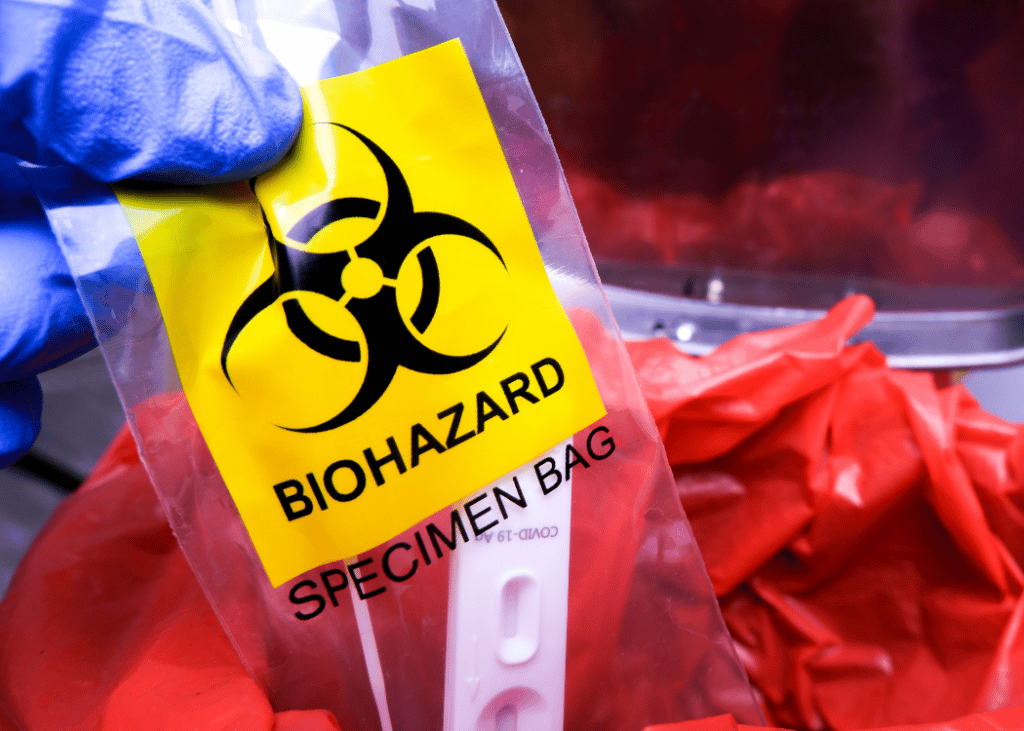Knowledge Released: Grasping the Art of Medical Waste Removal for Health And Wellness Facilities
Knowledge Released: Grasping the Art of Medical Waste Removal for Health And Wellness Facilities
Blog Article
Discovering Different Waste Disposal Options for a Cleanser Setting
In the search of a cleaner environment, the administration of waste disposal has emerged as a vital centerpiece for sustainable growth. With a multitude of garbage disposal choices available, ranging from standard land fill methods to innovative waste-to-energy modern technologies, the selection of exactly how we handle our waste has far-ranging ramifications for our planet's health. By taking a look at the different methods and methods utilized in recycling, composting, incineration, landfill monitoring, and waste-to-energy procedures, a much deeper understanding of their effects and efficiency can be obtained. The pursuit for optimal waste disposal methods that prioritize ecological conservation while meeting the requirements of a growing populace continues to be a pressing problem in today's world.
Recycling Approaches
Executing efficient reusing methods is crucial in decreasing waste and promoting sustainability in our setting. Recycling entails the process of transforming waste products into multiple-use challenge avoid unnecessary disposal. One of one of the most usual recycling approaches is worldly recovery, where materials like paper, plastic, steel, and glass are collected, arranged, and refined to produce new products. This process not just saves natural deposits yet likewise reduces power usage and greenhouse gas exhausts connected with creating new materials from square one.
Another essential recycling approach is composting, which includes decomposing organic waste like food scraps and yard trimmings into nutrient-rich dirt. By including these various recycling techniques right into our waste management techniques, we can considerably lower our environmental footprint and move towards a more lasting future.

Composting Strategies
Effective waste administration practices, such as recycling approaches, lead the way for a cleaner environment, and currently, shifting the emphasis to 'Composting Techniques', we explore lasting ways to decompose organic waste for environmental benefit. medical waste removal.
Composting is an all-natural process that changes organic waste, like food scraps and lawn trimmings, right into a nutrient-rich dirt amendment. The secret to successful composting hinges on producing the ideal balance of environment-friendly materials, such as vegetables and fruit scraps, and brownish products, like dried branches and fallen leaves. These materials decompose with the help of bacteria, damaging down the waste right into important compost.
Conventional backyard composting involves layering organic materials in a bin or stack and on a regular basis transforming the combination to aerate it. By using composting methods, we can minimize the quantity of waste sent to garbage dumps while producing a useful product for enriching dirt and supporting plant development.
Incineration Pros and Disadvantages
Incineration, as a garbage disposal technique, provides both benefits and disadvantages that warrant mindful factor to consider in the realm of sustainable waste management methods. On the positive side, incineration can considerably reduce the quantity of waste, decreasing the demand for land fill area and potentially decreasing greenhouse gas exhausts. Incineration additionally enables the recuperation of power with the generation of electrical energy or warm, adding to source recovery. The procedure can be utilized to destroy unsafe substances, supplying a risk-free technique for dealing with specific kinds of waste that may position dangers to public health and wellness and the atmosphere if left without treatment.
Nevertheless, there are noteworthy disadvantages to incineration. One major problem is the prospective release of hazardous toxins right into the air, such as dioxins, heavy metals, and particulate issue, which can have negative effects on human wellness and the atmosphere. Additionally, the high first investment and functional expenses of incineration facilities present financial challenges, making it a less cost-efficient choice contrasted to other waste monitoring strategies. Mindful monitoring and law are necessary to minimize these negative influences and optimize the benefits of incineration as part of a detailed waste management technique.
Land Fill Monitoring Methods
Landfills play an essential role in waste monitoring and ecological preservation by offering a containment system for the disposal of solid waste products. By compacting the waste, the quantity is lowered, permitting for more waste to be suited over time.
In addition, the execution of everyday cover methods is vital in minimizing smells, stopping trash, and minimizing the tourist attraction of bugs. Covering the disposed waste at the end of each day helps to consist of odors and stop possible environmental contamination. Additionally, the surveillance of garbage dump gas exhausts and leachate levels is essential in making sure that environmental standards are satisfied which any possible dangers to surrounding ecosystems are lessened.

Waste-to-Energy Technologies
Among the cutting-edge strategies to squander monitoring includes utilizing Waste-to-Energy technologies to transform strong waste into usable power sources. Waste-to-Energy (WtE) modern technologies include a range of processes that intend to draw out energy from waste products with thermal, chemical, or biological ways. This conversion procedure not only minimizes the volume of waste that ends up in land fills however also generates useful power sources such as electrical power, warm, or biofuels.
There are numerous useful link methods of Waste-to-Energy conversion, consisting of pyrolysis, incineration, and gasification. Incineration entails burning waste at high temperature levels to create warm and electrical power. Gasification transforms waste into a syngas, which can be made use of for power generation or chemical manufacturing. Pyrolysis breaks down organic products using high temperatures in the absence of oxygen, creating gas, bio-oil, and char.
Carrying out Waste-to-Energy innovations can aid mitigate ecological issues related to standard waste disposal techniques while all at once offering a renewable resource resource. Nevertheless, mindful consideration must be provided to emissions control and guaranteeing the sustainability of feedstock materials for these technologies to be really advantageous for a cleaner atmosphere.

Verdict
To conclude, exploring different garbage disposal options such as reusing, composting, incineration, landfill administration, and waste-to-energy modern technologies is vital for advertising a cleaner atmosphere - click here. Each method has its very own benefits and difficulties, but by making use of a combination of these strategies, we can function towards reducing the quantity of waste that ends up in garbage dumps and ultimately add to a much more sustainable future for generations to come
With a plethora of waste disposal choices offered, varying from conventional landfill approaches to ingenious waste-to-energy innovations, the choice of how we handle our waste has significant effects for our earth's health. medical waste removal service.Incineration, as a waste disposal method, presents both advantages and drawbacks that merit cautious factor to consider in the world of lasting waste management methods.Land fills play an essential function in waste administration and ecological preservation by offering a control system for the disposal of solid waste products. By condensing the waste, the quantity is minimized, allowing for even more waste to be suited over time
One of the ingenious techniques to lose management includes using Waste-to-Energy technologies to convert solid waste right into functional power sources.
Report this page